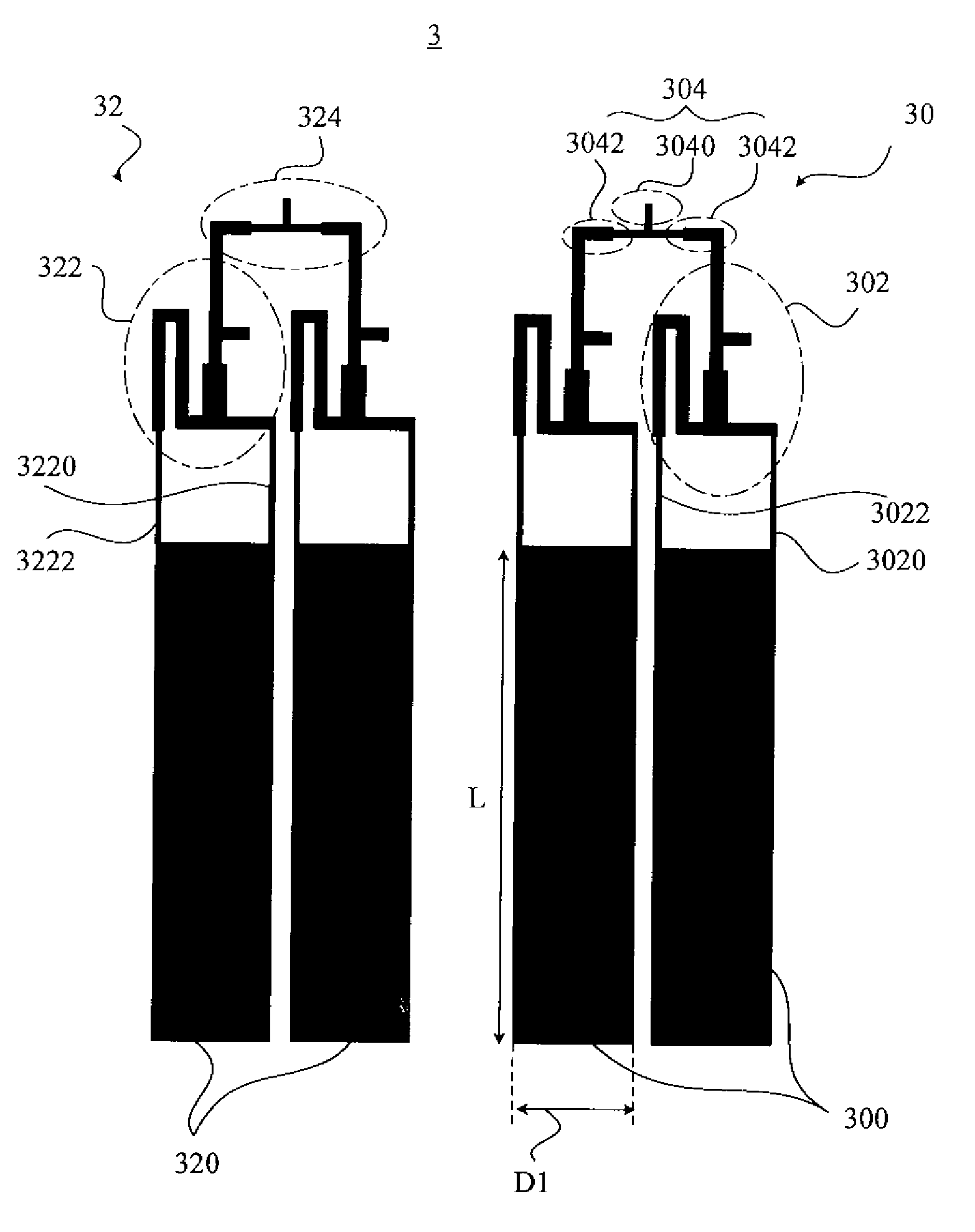Leaky-wave dual-antenna system
a dual-antenna and leaky wave technology, applied in the structural form of radiating elements, leaky waveguide antennas, resonance antennas, etc., can solve the problem of more signal leakage, achieve the effect of reducing the maximum coupling factor, reducing the coupling factor, and improving the gain of the antenna
- Summary
- Abstract
- Description
- Claims
- Application Information
AI Technical Summary
Benefits of technology
Problems solved by technology
Method used
Image
Examples
Embodiment Construction
[0024]FIG. 4A illustrates a leaky-wave dual-antenna system 3 according to the first embodiment of the present invention. As illustrated in FIG. 4A, the leaky-wave dual-antenna system 3 of the invention comprises a transmitting antenna array 30 and a receiving antenna array 32. The transmitting antenna array 30 is used for transmitting an electromagnetic wave to a detection target. The transmitting antenna array 30 comprises two first microstrips 300 and two corresponding first differential circuits 302, and each of the first differential circuit 302 matches the corresponding first microstrip 300 by an L-type matching network. The receiving antenna array 32 is for receiving the reflected electromagnetic wave after transmitted by the transmitting antenna array 30 to the detected target. The receiving antenna array 32 comprises two second microstrips 320 and two corresponding second differential circuits 322, and each of the second differential circuit matches 322 the corresponding sec...
PUM
 Login to View More
Login to View More Abstract
Description
Claims
Application Information
 Login to View More
Login to View More - R&D
- Intellectual Property
- Life Sciences
- Materials
- Tech Scout
- Unparalleled Data Quality
- Higher Quality Content
- 60% Fewer Hallucinations
Browse by: Latest US Patents, China's latest patents, Technical Efficacy Thesaurus, Application Domain, Technology Topic, Popular Technical Reports.
© 2025 PatSnap. All rights reserved.Legal|Privacy policy|Modern Slavery Act Transparency Statement|Sitemap|About US| Contact US: help@patsnap.com



